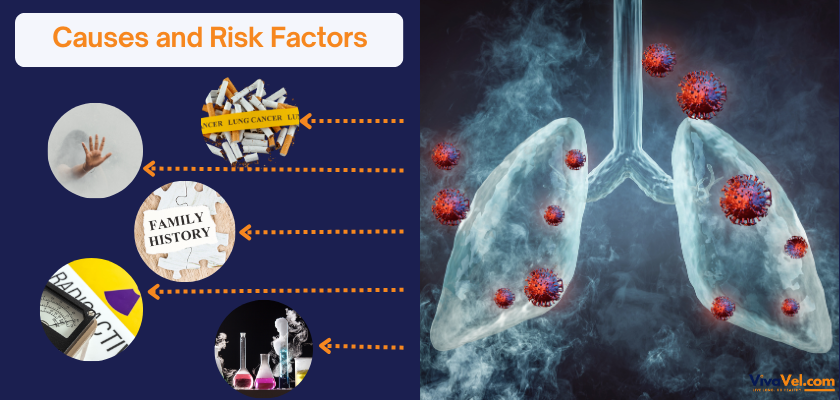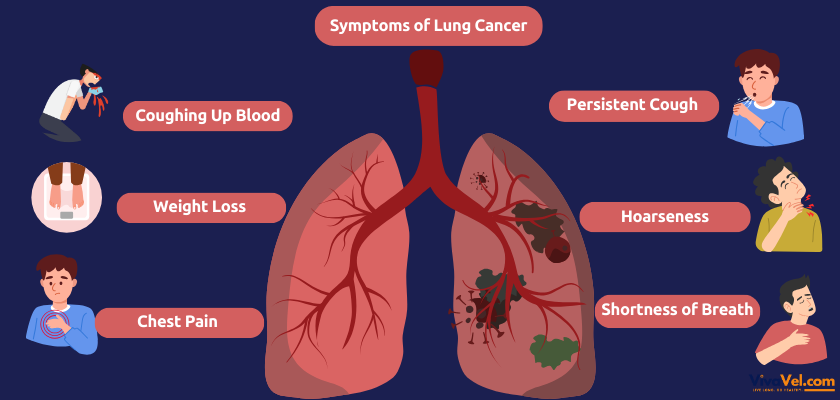Understanding Lung Cancer: Causes, Symptoms, and Treatment
Lung cancer is one of the most common and serious types of cancer worldwide. It occurs when abnormal cells in the lungs grow uncontrollably, forming tumors that interfere with normal lung function. Early detection is crucial for improving survival rates, yet lung cancer is often diagnosed in its later stages due to subtle initial symptoms. This article will explore lung cancer's causes, symptoms, risk factors, treatment options, and prevention methods.
What is Lung Cancer?
Lung cancer is a disease that begins in the lungs when abnormal cells grow uncontrollably, forming tumors. If not treated early, it can spread (metastasize) to other parts of the body, making treatment more difficult. It is one of the leading causes of cancer-related deaths worldwide.
There are two main types of lung cancer:
1. Non-Small Cell Lung Cancer (NSCLC)
This is the most common type, accounting for about 85% of all lung cancer cases. It tends to grow and spread more slowly than small-cell lung cancer. NSCLC includes:
Adenocarcinoma – The most frequent type, often found in the outer parts of the lungs. It is more common in non-smokers and younger individuals.
Squamous Cell Carcinoma – Usually starts in the central part of the lungs, near the bronchial tubes. It is strongly linked to smoking.
Large Cell Carcinoma – A less common but fast-growing form that can appear anywhere in the lung.
2. Small Cell Lung Cancer (SCLC)
This is a more aggressive and rapidly spreading form of lung cancer, accounting for about 15% of cases. It is strongly associated with smoking and tends to spread to other organs quickly, making early detection crucial. SCLC grows much faster than NSCLC, which is why it is often diagnosed at an advanced stage.
Causes and Risk Factors
The primary cause of lung cancer is smoking, responsible for nearly 85% of cases. Tobacco smoke contains thousands of harmful chemicals, many of which are carcinogenic. These substances damage lung tissues over time, leading to mutations that can result in cancerous growth.
However, lung cancer is not exclusive to smokers. Non-smokers can also develop lung cancer due to several other risk factors, including:
Exposure to Secondhand Smoke – Inhaling smoke from cigarettes, cigars, or pipes used by others significantly increases lung cancer risk.
Air Pollution and Toxic Chemicals – Long-term exposure to pollutants like asbestos, radon gas, arsenic, and diesel exhaust can contribute to lung cancer development.
Genetic Predisposition – A family history of lung cancer may increase susceptibility due to inherited genetic mutations.
Previous Radiation Therapy – Individuals who have undergone radiation therapy to the chest for other cancers may be at a higher risk of developing lung cancer later in life.

Symptoms of Lung Cancer
Lung cancer symptoms can be subtle initially and are often mistaken for other respiratory conditions, such as bronchitis or pneumonia. By the time symptoms become noticeable, the cancer may have already progressed. Some common signs include:
Persistent Cough That Worsens Over Time – A chronic cough lasting more than eight weeks, especially if it produces mucus or phlegm with blood, should be evaluated.
Coughing Up Blood – Known as hemoptysis, this symptom can indicate lung damage or tumor growth affecting blood vessels.
Shortness of Breath and Wheezing – Tumors can obstruct airways, making it harder to breathe normally.
Chest Pain – Discomfort in the chest, back, or shoulders that worsens with deep breathing, coughing, or laughing.
Hoarseness – Changes in voice tone due to tumor pressure on the vocal cords.
Unexplained Weight Loss and Fatigue – Cancer cells consume energy, leading to significant weight loss and persistent tiredness.

Diagnosis and Screening
Early detection significantly improves treatment outcomes. Physicians use various methods to diagnose lung cancer, including:
Chest X-ray and CT Scans – These imaging techniques help identify abnormal lung growths at an early stage.
Biopsy – A tissue sample is collected through a needle, bronchoscopy, or surgical procedure to confirm the presence of cancer cells.
PET Scan and MRI – Advanced imaging techniques are used to determine whether the cancer has spread to other body parts.
Low-Dose CT Scans (LDCT) – Recommended for high-risk individuals (long-term smokers, those with a family history) to detect lung cancer before symptoms develop.
For high-risk individuals (long-term smokers, and those with a family history), regular screening with low-dose CT scans is recommended.
Treatment Options
Treatment Options Lung cancer treatment depends on the type, stage, and overall health of the patient. The most common treatment approaches include:
Surgery – Removing part or all of the affected lung to eliminate cancerous tissue.
Radiation Therapy – High-energy rays target and destroy cancer cells, often used alongside surgery or chemotherapy.
Chemotherapy – Drug treatments that circulate throughout the body to kill cancer cells or slow their growth.
Targeted Therapy – Medications designed to attack specific genetic mutations in cancer cells, leading to fewer side effects than chemotherapy.
Immunotherapy – Enhancing the body's immune system to recognize and fight cancer cells more effectively.
Palliative Care – Supportive treatment to alleviate symptoms and improve quality of life for patients with advanced lung cancer.
Prevention and Lifestyle Changes
Prevention and Lifestyle Changes While lung cancer cannot always be prevented, adopting a healthy lifestyle can significantly reduce risk:
Quit Smoking and Avoid Secondhand Smoke – The single most effective way to prevent lung cancer is to stop smoking and minimize exposure to tobacco smoke.
Test Homes for Radon Exposure – Radon gas is a leading cause of lung cancer in non-smokers. Testing and mitigation efforts can help reduce exposure.
Reduce Exposure to Toxic Substances – Workplace safety measures should be taken to avoid prolonged exposure to carcinogens like asbestos and industrial pollutants.
Maintain a Healthy Diet – Consuming a diet rich in fruits and vegetables provides antioxidants that help protect lung cells from damage.
Exercise Regularly – Engaging in physical activity strengthens lung function and overall health, lowering cancer risk.
Routine Medical Checkups – Regular health screenings help detect potential issues early and increase survival chances.
Final Thoughts
Lung cancer remains a major health concern, but awareness and early detection can significantly improve outcomes. Understanding risk factors, recognizing symptoms, and undergoing regular screenings are key to early diagnosis and effective treatment.
If you or a loved one experiences persistent symptoms like a chronic cough, shortness of breath, or unexplained weight loss, consult a doctor immediately. Early detection increases the chances of successful treatment.
Spreading awareness about lung cancer prevention and risk factors can save lives. Stay informed, stay proactive, and prioritize lung health.
For world-class lung cancer screenings and treatments, consider VivaVel Health Tourism—your trusted partner in medical travel, connecting you with top healthcare providers for the best possible care.
Stay informed, stay healthy! With VivaVel.

